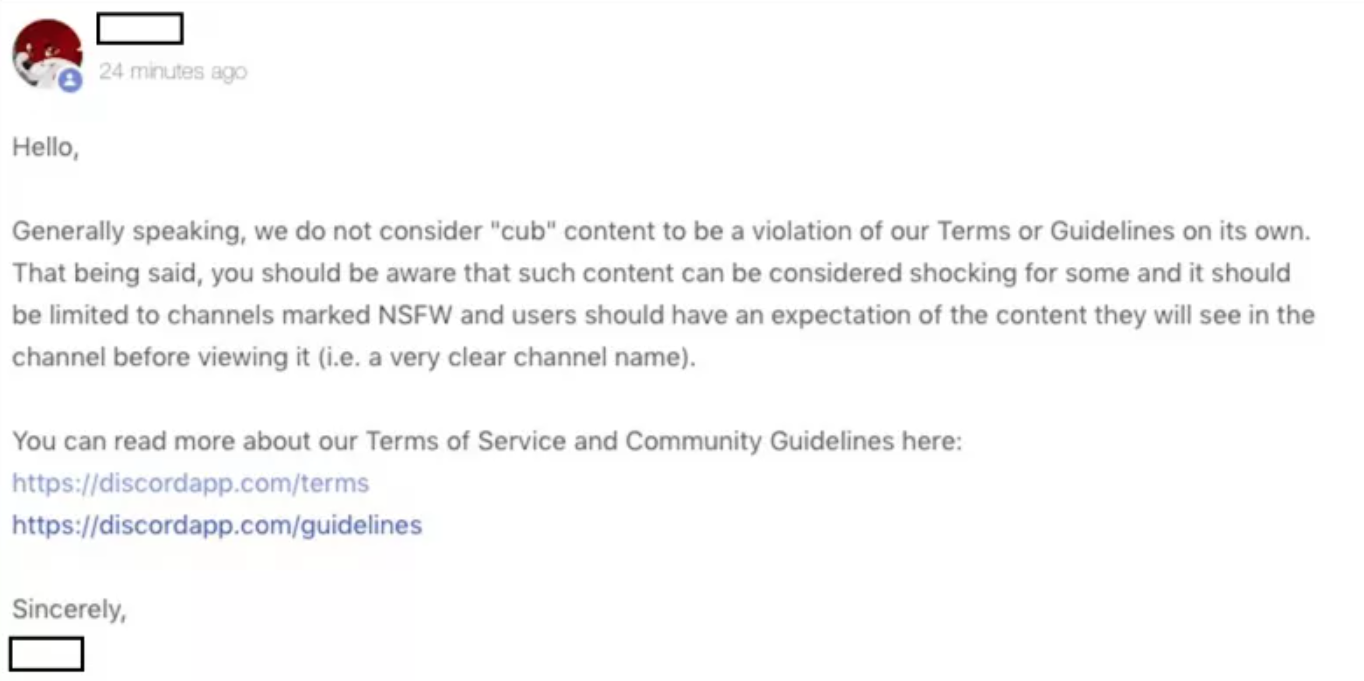As technology continues to advance, the metaverse has emerged as a new frontier for virtual interaction. While it presents numerous opportunities for creativity and connectivity, there are growing concerns about child safety in these digital realms. Recent controversies surrounding child predators in the metaverse, particularly within the furry community, have raised alarms about the inadequate protection of children. This article explores the dark underbelly of the metaverse, focusing on the failures of Linden Lab, the creators of Second Life, to adequately address the issue.
This article has a younger sibling, which can be located here.
This article series may be subjected to additional articles in the future.

Firstly, it is only proper to start off by addressing child abduction as a very serious concern, because it is important to raise awareness about this issue. In the United States alone, nearly half a million children are reported missing each year, according to the National Center for Missing and Exploited Children. While it’s essential to note that not all missing children cases involve abductions, technology and the rise of social media and video games have indeed introduced new challenges in child protection. Predators can exploit these platforms to gain access to potential victims, using deceptive tactics and manipulation to exploit vulnerabilities. It is crucial for parents, guardians, and society as a whole to remain vigilant, educate children about online safety, and support initiatives that promote a safer digital environment for children. Collaborative efforts involving law enforcement agencies, technology companies, and communities are crucial in combating this pervasive issue and protecting children from abduction and exploitation.

Transhumanism, as a concept, presents a range of philosophical and ethical questions. While it offers potential benefits, such as improved health and extended lifespans, there are also concerns regarding the dangers it might pose. One particular aspect of transhumanism that raises eyebrows is the desire of some individuals to embrace non-human identities, such as wishing to be dogs instead of humans or perpetually remaining children. Critics argue that these desires could lead to a detachment from the fundamental human experience and the erosion of societal structures. They raise concerns about the potential loss of empathy, human connection, and the capacity for personal growth that comes with embracing the challenges and responsibilities of being human. Additionally, the blurring of lines between human and non-human identities could have unforeseen consequences for our understanding of ethics, rights, and the nature of personhood. It is essential to approach the exploration of transhumanism and its possibilities with caution, carefully considering the potential risks and weighing them against the potential benefits it may bring.

The furry community, known for its interest in anthropomorphic animal characters, has unfortunately become a breeding ground for child predators in the metaverse. Instances of child abuse and exploitation within this community have tarnished its reputation and raised serious concerns. Notably, the Furpedia, an online encyclopedia dedicated to the furry fandom, documented numerous cases of furry sex abuse in 2016 and 2017. These cases highlighted the urgent need for platforms to take decisive action in protecting their users, especially minors.

It is deeply unsettling to note that a significant number of the individuals involved in the 2016 and 2017 abuse cases within the furry community were active users of Second Life. Astonishingly, their accounts remain active to this day, raising concerns about the platform’s response to such egregious offenses. The details that emerged from these cases paint a horrifying picture: the child, who happened to be the offspring of one of the furries involved, endured years of abuse at the hands of these individuals. Shockingly, they would dress the child as a baby furry version of Tony The Tiger during the heinous acts that took place at furry sex trafficking parties. The gravity of these crimes is further compounded by the fact that some of these individuals were arrested for creating illegal animal pornography and distributing it to other users within Second Life. Such abhorrent behavior highlights the urgent need for platforms to implement stringent measures to identify and remove individuals engaged in child exploitation and illegal activities, ensuring the safety and well-being of their users, especially minors.

During our own research, one of our most shocking discoveries was the fact that all of these predators were never banned from the platform Second Life itself. Their accounts sit unscathed, awaiting their return from their individual prison sentences. The most alarming discovery was the fact that the only person found not guilty of all charges, Kenneth Fenske, continues to operate a store selling smoking devices until this very day. His store is on a virtual property owned by him that also contains a building which was built by Phillip Stallsworth, a furry who was arrested in connection with this group for having intercourse with an animal and tampering with evidence that he was distributing the material for profit presumably on Second Life. Kenneth Fenske continues to host virtual poker tournaments for all ages on his property until this very day. The only reason Kenneth was found not guilty was because another furry, who had allegedly created Kenneth Fenske’s fursuit, proclaimed that he had created the fursuit at a date later than the child had alleged the abuse took place.

Some of the additional details of this case are almost too shocking and rancid to even write about. Craig Knox, who had worked together with David Parker to organize the calculated rape of David Parker’s own son, also had admittedly raped his own rottweilers in ways unimaginable. After veterinarian inspection, the dogs were ordered to be euthanized to put them out of their misery sustained from the wounds they had endured. Knox was all too joyous during a jailhouse interview while explaining his infatuation with little boys, but ended the interview in a cowardice manner when asked about dogs. Knox ripped his microphone off of his jailhouse jumpsuit and demanded the interview be ended right there and then as if he finally felt ashamed of what he had done. Outside of Knox enjoying his brief moment of notoriety, no other offender has been known to comment including the miserable and vile excuse for a human being by the name of David Parker.

One of the troubling aspects of the furry community’s association with child-related content in the metaverse is the existence of Luskwood, a furry sim within Second Life. Luskwood has been endorsed by Linden Lab, the company behind Second Life, and is known to cater to children. This endorsement raises questions about the company’s commitment to ensuring the safety of minors in their virtual world. In addition to its endorsement by Linden Lab, Luskwood has drawn attention for its apparent homage to “The Astonishing Treehouse of the Secret Moon”, a text role play community which catered to role playing as “tiny” furries or baby furs. Baby furries have been used as a legality loophole in pedophilia since the 1990’s, Linden staff members are known for playing avatars which portray tinies. This connection further blurs the line between child-friendly content and the potential for exploitation within the furry community. Moreover, the initiation process for becoming a staff member at Linden Lab raises concerns. Prospective staff members are reportedly required to create a 3D asset known as a Linden bear, which resembles a baby furry. This initiation process, while seemingly innocent on the surface, can create an environment where the boundaries between childlike innocence and potential exploitation become blurred. Such practices raise serious questions about the appropriateness and safety of activities within Luskwood and the furry community as a whole.

Linden Lab has a controversial history when it comes to safeguarding users, particularly children, within their platform. In 2019, Wired published an article titled “Second Life Is Plagued by Security Flaws, Ex-Employee Says”, shedding light on the platform’s security vulnerabilities. These flaws not only compromised user data but also put children at risk. Additionally, Linden Lab has been accused of turning a blind eye to certain forms of ageplay, a practice involving the simulation of sexual activities involving minors, within Second Life. A glorified ageplayer, user Marianne McCann has become a prominent figure in correlation this controversy, raising concerns about the platform’s lax stance on child safety.
In the past, investigations into Second Life, such as the one conducted by Sky News Australia in 2011, have revealed disturbing instances of virtual child exploitation. The investigation shed light on the presence of virtual child prostitution within the platform, with child avatars being subjected to explicit and abusive activities. Shockingly, it was also discovered that some users had created virtual spaces that simulated torture and death chambers, further highlighting the alarming extent of these exploitative behaviors. These findings exposed the darker side of virtual communities and emphasized the urgent need for platforms like Second Life to implement stricter regulations and safeguards to protect vulnerable users, particularly children, from such heinous activities.

In a recent controversial campaign, luxury fashion brand Balenciaga sparked outrage by featuring images of a child holding a teddy bear adorned in a BDSM harness. This disturbing visual representation raised significant concerns about the ethical boundaries crossed by the brand. Notably, Balenciaga also included images of the Ashcroft v. Free Speech Coalition document, a legal case involving the protection of virtual child pornography. The inclusion of such imagery further intensified the controversy surrounding the campaign, as it brought attention to the complex and sensitive issue of child exploitation. In a parallel vein, Linden Lab, the creators of Second Life, have also faced scrutiny for their questionable use of teddy bears in their platform. The comparison between Balenciaga and Linden Lab’s utilization of teddy bears as imagery highlights the need for all entities, whether in the fashion or virtual world, to be held accountable for their actions and ensure they do not contribute to or perpetuate harmful practices involving children.

The controversies surrounding Linden Lab’s approach to child safety in the metaverse extend beyond the furry community. Shockingly, two sims designed by Linden Lab within Second Life have existed for around twenty years, named after Mitch Kapor and Philip Rosedale, that seemingly contain a two-region-wide gay pedophile meme disguised as an Easter Egg hunt. This disturbing content mocks the resurrection of Christ and perpetuates harmful stereotypes while operating under the guise of a virtual event. The existence of such content for such a long duration raises serious questions about Linden Lab’s commitment to child protection. The fact the phrase “Easter Egg” is also used to reference hidden esoteric information in video games, software, movies and other media makes these two regions all the more alarming. At the center of the monumentous build exists a waterfall with a rainbow leading to a pot of gold from the Kapor side which rests perfectly placed on the center of the border of the Rosedale side. As if that wasn’t enough, if one pans their camera under the water near the waterfall they will witness fish swimming from the Kapor side toward the pot of gold. The fish change color mid-stream, something that is a repeating theme on questionable builds spearheaded by Linden Lab themselves containing this sort of imagery that could easily be concluded as being symbolic of the corruption of children for profit.

The presence of an Easter Egg hunt in a sim named after Mitch Kapor raises questions about its appropriateness and potential impact on individuals who hold Christian beliefs. Easter holds significant religious importance for Christians as it commemorates the resurrection of Jesus Christ. While the intention behind including an Easter Egg hunt in the sim may not be known without further information or statements from those involved, it is understandable why some Christians might perceive it as disrespectful or insensitive. Religious sensitivities should be taken into account when designing and promoting company-owned content in virtual spaces to ensure inclusivity and respect for diverse beliefs. This is a sentiment that should be known all too well by Kapor, who was born Jewish, a minority group which has faced various forms of historical subjugation.
Linden Lab’s association with controversial sims extends beyond Luskwood, Kapor and Rosedale. One such sim, named Rizal, is particularly noteworthy due to its problematic elements. Positioned directly next to one of the most historically popular landing points in the game, the sim’s name derives from a province in the Philippines raising concerns due to the country’s low age of consent. Rizal is created on a General-rated sim, intended for all audiences, which makes its content even more troubling.
When Second Life was first launched, one of its stated aims was to provide a virtual outlet for individuals with physical and mental disabilities. It sought to create an inclusive and supportive environment for those who may face challenges in the physical world. However, over time, concerns have been raised about how Second Life’s approach to mental illness has evolved, leading to accusations that it has become more harmful than helpful to mentally ill users.

A bike ride at the Rizal boardwalk designed to attract the attention of children, entices them to wear a helmet that resembles one associated with individuals who have intellectual disabilities. This portrayal can be seen as insensitive and perpetuating harmful stereotypes. Furthermore, the directional signs leading to the furry sim Luskwood from this point can raise questions about the appropriateness of blurring the lines between child-friendly areas and potentially unsafe environments.
Additionally, there have been dubious reports of mentally ill users having their accounts permanently terminated by Second Life. Some of these terminations are known to have led to the subsequent suicides of particular terminated individuals. Such consequences of terminating your users should be considered, especially with virtual worlds designed for users to make a living off of creating or participating in. While platform policies and rules are necessary to maintain a safe and healthy environment, it is crucial to consider the unique circumstances of individuals with mental illnesses, who may experience uncontrolled outbursts or behavior. Taking a more compassionate and understanding approach when dealing with such users can contribute to a more inclusive and supportive virtual community.
Furthermore, Rizal includes several questionable memes that raise eyebrows. One meme suggests preemptive programming through inclusivity of transgender bathrooms, the correlation of this meme with other questionable content that stands in parallel raises questions about a more nefarious agenda behind zoophiles and pedophiles in positions of power who may be attempting to manipulate the LGBT agenda. Paris Jackson has recently addressed this controversial topic herself in an article titled “Michael Jackson’s daughter Paris says LGBTQ community is no place for ‘pedos’ and ‘molesters'” with absolute disgust and disdain.

The bathroom meme also seemingly draws references to the Greek pantheon, which Philip Rosedale has historically compared Second Life’s diverse demographic to, including one instance during in an interview with Rolling Stone magazine. The bathroom meme presents several doors with a pantheon of images representing Second Life’s diverse mythical player characters, a single door in the middle of all these characters and doors picturing a child and a teddy bear together. While there are generally considered to be Twelve Olympians, there is thirteen of them documented. There are thirteen characters depicted on the bathroom doors. Drawing another parallel between Mitch Kapor’s ancestry and Linden Lab architecture on Second Life are the six doors, as the Talmud has been reported to contain six genders.
Another concerning element in Rizal is a pawn shop known as the “Prawn Shop.” In this name, the letters “aw” in “Prawn” are crossed out with a “0” in spray paint, resulting in the spelling “Pr0n.” This alteration hints at the presence of questionable material within a private viewing room accessible by panning the camera through a wall. The existence of such explicit content within a sim that is accessible to users of all ages raises significant concerns about Linden Lab’s commitment to ensuring a safe and appropriate virtual environment for children. These troubling details surrounding Rizal highlight the pressing need for platforms like Linden Lab to prioritize the safety, well-being, and ethical standards when curating and monitoring virtual spaces. It is crucial that these companies take a strong stance against potentially harmful content and actively work towards creating a secure environment that upholds the highest standards of user protection, especially for underage participants.

After reading an interview with Philip Rosedale published in Financial Times during 2017 where Rosedale detailed that he preferred a vintage 16mm camera while filming his own children, something unrelated came to mind in correlation with the Rizal “Pr0n Shop” viewing room: It is important to acknowledge that any recording device, including vintage cameras, could potentially be used in deceptive ways. In the context of child exploitation, a pedophile might exploit the vintage nature of a camera and intentionally film illicit activities involving children to create the false impression that the material is from a distant time. By using outdated technology, such individuals could attempt to mislead investigators regarding the timing and authenticity of the recorded content. This underscores the challenges investigators face in discerning the truth and emphasizes the need for thorough forensic analysis and expertise when examining evidence in cases related to child exploitation. Law enforcement agencies and digital forensics experts play a crucial role in unraveling the complexities surrounding such incidents, ensuring the proper identification and prosecution of offenders to protect vulnerable children.
Similar to content endorsed by Linden Lab, in 2019, Discord staff faced significant backlash and scrutiny when it was revealed that they had allowed cub content, referring to explicit or suggestive material involving underage anthropomorphic characters, on their platform. This controversy stemmed from the fact that some staff members themselves were known to be furries, as evidenced by their use of furry avatars in their display pictures on support tickets and other interactions with users.

The name and avatar of this Discord staff member heavily implies that they are a “tiny fur” themselves.
The revelation that staff members who were furries had a role in determining and enforcing Discord’s content policies raised concerns about potential biases and conflicts of interest. Users and the broader community criticized Discord for what they perceived as turning a blind eye to the presence of cub content, despite its explicit violation of the platform’s Terms of Service and community guidelines.
The controversy sparked discussions about the responsibility of platform moderators and the need for consistent and unbiased enforcement of content policies. Discord eventually took action to address the issue and reinforce their stance against cub content, clarifying their guidelines and making efforts to remove such content from their platform. However, the incident highlighted the challenges platforms face in ensuring the safety and appropriateness of user-generated content, as well as the importance of transparency and accountability in content moderation processes.
In the face of these concerning revelations, efforts are being made to improve child safety in the metaverse. One such initiative is THUG.TV, an organization dedicated to fostering a safe environment for children in virtual spaces. THUG.TV aims to raise awareness about potential risks, work with platform developers to implement robust safety measures, and educate parents and children about digital safety practices. Their proactive approach to addressing the issue is a step in the right direction.

As part of their efforts, they have produced an extensive documentary that delves into the topics covered here, providing in-depth coverage and analysis. This documentary aims to shed light on the dark underbelly of the metaverse, including the controversies surrounding child predators in the furry community, the endorsement of Luskwood by Linden Lab, the 2016 and 2017 abuse cases, and the problematic history of Second Life. By presenting detailed information and raising awareness about these critical issues, THUG.TV seeks to educate the public and push for systemic change to ensure the safety and well-being of children in virtual spaces.
Cryptocurrency has emerged as a powerful force in reshaping financial systems and challenging centralized control. It offers the potential to keep power out of the hands of tyrants who may not uphold constitutional rights or respect basic human rights, including freedom of speech. The decentralized nature of cryptocurrencies, such as Bitcoin and Ethereum, has enabled individuals to transact and store value securely, without relying on traditional intermediaries or centralized authorities.
While the benefits of cryptocurrency in promoting financial sovereignty and privacy have gained widespread recognition, it is worth noting that not everyone shares the same sentiment. Philip Rosedale, a notable figure in the virtual world domain, has expressed his reservations and even disdain towards cryptocurrency and non-fungible tokens (NFTs). It is important to acknowledge diverse perspectives and engage in constructive discussions to fully understand the implications and potential limitations of these emerging technologies.

Recent developments have seen figures like Mark Zuckerberg attempting to exert dominance over the metaverse, leveraging the momentum influenced by cryptocurrency. However, concerns arise when such endeavors lack respect for the core values and principles that underpin the decentralized nature of cryptocurrency, which include transparency, privacy, and individual empowerment. It is vital to carefully assess the motivations and intentions of influential individuals and corporations as they navigate the evolving landscape of the metaverse and its intersection with cryptocurrency.
As we move into the future, the importance of cryptocurrency cannot be understated. Its ability to challenge centralized control, empower individuals, and protect fundamental rights like freedom of speech makes it a significant force for positive change. However, it is crucial to remain vigilant, ensuring that the adoption and evolution of cryptocurrency align with the principles of decentralization, privacy, and user empowerment. By doing so, we can harness the true potential of cryptocurrency to create a more inclusive and democratic digital world.
The metaverse holds incredible potential for creativity and connection, but the presence of child predators and inadequate protection mechanisms demand immediate attention. The controversies surrounding child safety within the furry community, Linden Lab’s problematic history, and the existence of disturbing content all highlight the urgent need for platforms to prioritize the safety of children in the metaverse. As technology advances, it is crucial that companies and organizations take proactive steps to protect the most vulnerable users and create a safe virtual environment for all.

Disclaimer: It is important to acknowledge that while this article includes certain details that are based on factual evidence, other aspects may be speculative or based on conjecture. The intention is to highlight potential concerns and raise awareness about certain behaviors or situations that have been discussed or reported in various sources. However, it is crucial to approach these speculations with caution and not make definitive conclusions without concrete evidence. Readers are encouraged to conduct further research and exercise critical thinking when evaluating the information presented. The purpose of this article is to prompt discussion and encourage a deeper examination of the issues at hand rather than make conclusive statements.
Latest revision: 3/2/2024
Article is subject to future revisions for additional media and elaboration on existing topics.
